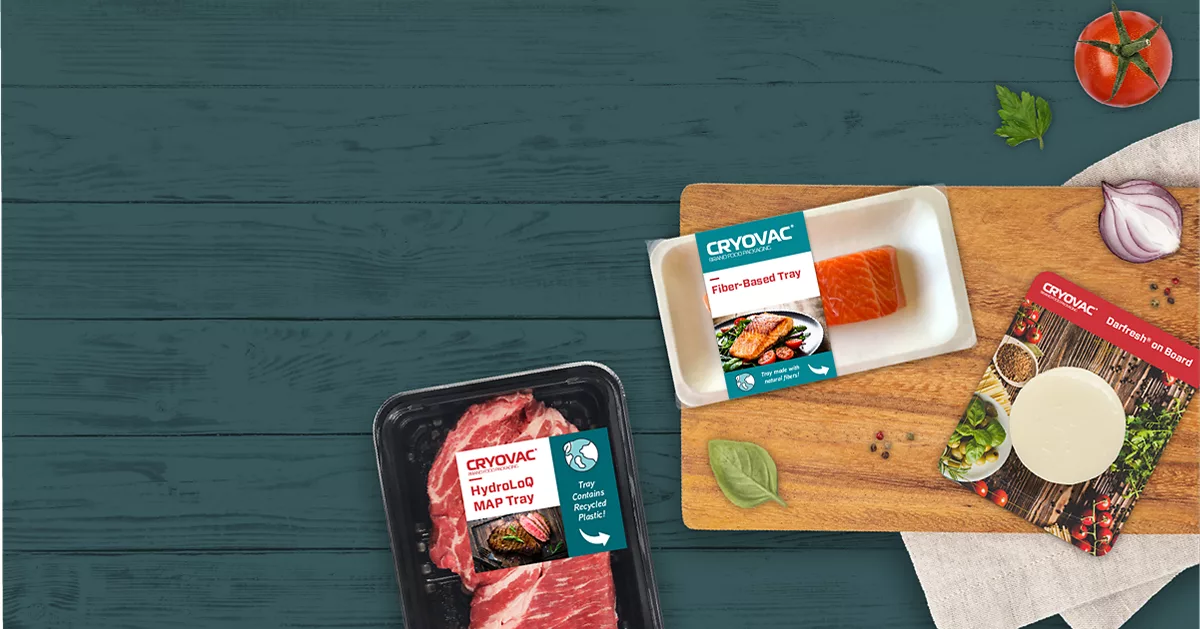Europe, Middle East, Africa (EMEA)
Asia Pacific (APAC)
Americas (AM)
- Automated Food Equipment
- Automated Rotary Vacuum Chamber System
- Bag and Pouch Food System
- Bagging and Loading
- Barrier Bags
- Chub Packaging
- Dispensing Pouches
- Easy-Open Shrink Bags
- Food Packaging Shrink Tunnels
- Form-Fill-Seal Films
- Forming Webs
- Lid Films
- Non-Barrier Bags
- Non-Forming Webs
- Overwrap Films
- Pre-Opened Bags
- Preformed Food Trays
- Rotary Vacuum Chamber Systems
- Single-Chamber Vacuum Systems
- Robotic Bag Loader
- Vacuum Skin Packaging
- Vertical Form-Fill-Seal Systems
- Product Handling Equipment
- Temperature Assurance
- Automated Cartoning
- Automated Mailers
- Bagging Systems
- Bagging & Printing
- Bubble Bags
- Bubble Bundles
- Fabricated Foams
- Foam Moulding Systems
- Inflatable Pillows
- Inflatable Cushioning
- Inflatable Pouches
- Inflatable Cushioning System
- Inflatable Void Fill System
- Instapak® Quick RT
- Instapak® Simple
- Instapak® Speedypacker
- Light Cushioning
- Paper Mailers
- Paper Cushioning System
- Paper Bubble Mailer
- Paper Pack Station Solutions
- Paper Void-Fill Systems
- Paper Wrapping Solutions
- Performance Inflatables
- Poly Mailers
- Recycled Bubble
- Recycled Content Inflatable Air Pillows
- Recycled Inflatable Cushioning
- Retention & Suspension
- Shrink Wrap Machines & Equipment
- Shrink Films
- Shrink L-Sealers
- Shrink Tunnels
- Side-by-Side Bag and Pouch Systems
- SidePouch Bags
- Surface Protection Foams
- Textile Packaging System
- Tabletop Bagging Systems
- Universal Inflation System
- Aerospace and Defence
- Alternative Proteins
- Clothing and Accessories
- Automotive
- Bakery and Snacks
- Building & Construction
- Cheese & Dairy Foods
- Consumer Goods
- Electronics
- Food & Drinks
- Food Processing
- Food Service
- Fresh Beef, Pork & Lamb
- Fresh Produce
- Frozen Foods
- Fulfillment & E-Commerce
- Healthcare
- Industrial Parts
- Liquid Food Products
- Manufacturing
- Meal Kit Packaging
- Pet Care
- Poultry Packaging
- Ready to Eat Meals
- Seafood
- Smoked & Processed Meats
- The True Cost of Damage
- Solving Complex Fulfillment Challenges
- Reducing Food Waste Throughout The Global Supply Chain
- 3 Ways a Preventive Maintenance Plan Can Save Food Processors Money
- Connectivity: The Modern Age Of Manufacturing Technology
- Are Your Recycling Efforts a Waste?
- 5 Pitfalls to Avoid When Automating Your Packaging Hall
- Case-Ready Packaging Helps Offset Uncertainty
- Closing the Loop with Advanced Recycling
- Dinner on the Doorstep: A New Age of Grocery Shopping
- E-Commerce Demand Drives Change
- How Direct-to-Consumer Brands Can Improve The Online Delivery Experience With Packaging
- Join Us in the Lab
- Limited Touchpoints Ease Consumer Concerns
- Net Zero Emissions for Automotive Packaging
- Online Shopping Goes High-Tech — and High Risk
- Package Designs That Drive Change
- Paper Remains Top Pick for Recyclable Packaging
- Questions for ODMs When Selecting a Packaging Supplier
- Return Logistics Shouldn’t Be an Afterthought for Online Retailers
- Shipping Trends Favor Parcels, Not Pallets
- Sustainability Impact of E-Commerce Packaging
- Sustainability in Seafood: Emphasized Demands and Redefined Standards
- Tackle Dimensional Weight by Rethinking the Box
- The Changing Face of the Retail Grocery Shopper
- Unboxing: The Power of Packaging
- Unsealing Food Technology to Feed the World
- What Is Smart Packaging?
- Why EV Charger Packaging Must Start With 'Unboxing’
- How European Grocery Retailers Are Rethinking Packaging Sustainability
- 4 Reasons to Switch From Rigid to Flexible Packaging

Offering Sustainable Tray Solutions
TO STAY AHEAD OF REGULATIONS AND EXCEED CUSTOMER EXPECTATIONS
As the world evolves towards circular economies, more and more consumers are approaching the meat and seafood case with a growing interest in products that boast sustainable processing and packaging, forcing food processors and retailers to think differently about how packaging can improve sustainability.
Plastic taxes, regulatory bans of expanded polystyrene (EPS) foam, sustainability pledges, and consumer pressure will keep sustainability attributes, such as recyclability, biodegradability, and packaging waste top of mind for food processors, retailers and consumers. Regulatory changes and evolving consumer preferences can lead any meat processor or retailer to make packaging decisions too quickly, so it's important to work with someone you trust, stay informed, and make the change that’s right for you.

Sustainable Solutions for Today’s Digital Consumer
Packaging trends from the 2022 National Meat Case Study.
Meat Packaging Disposal & Environmental Concerns
Environmental Sustainability of Packaging is a Key Concern at the Meat Case
Even though most consumers dispose of their meat packaging by throwing it in the rubbish, concerns over package and food waste continue to rise. Sustainability attributes, such as recyclability, biodegradability and packaging waste are growing areas of interest for food processors, retailers and consumers.
75%
of shoppers are concerned about the amount of plastic in the ocean
70%
of shoppers are concerned about the amount of food wasted worldwide.
67%
of shoppers are concerned about the amount of plastic in landfill
Your Sustainable Packaging Strategy Should Be... Well, Sustainable
And while the definition of “sustainable packaging” can vary greatly depending on individual needs and perspectives, we take a life cycle approach. We believe it is critically important to go beyond the traditional focus on end of life to include all possible impacts of a package, from sourcing and manufacturing through design, use, transportation and recovery.




